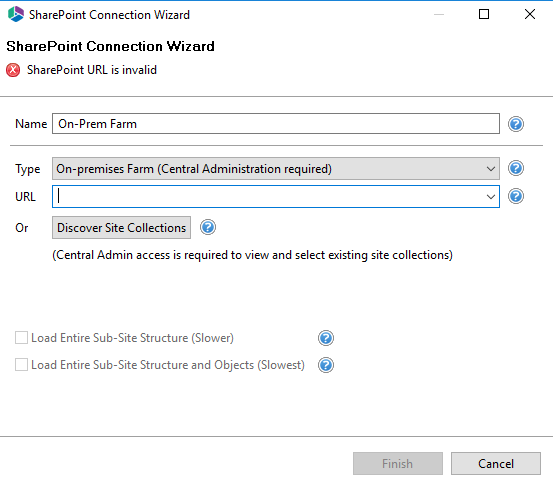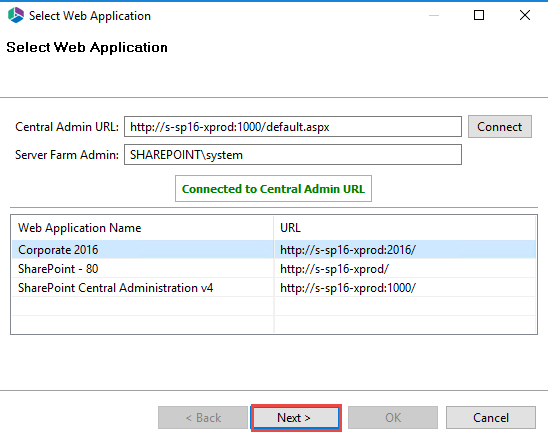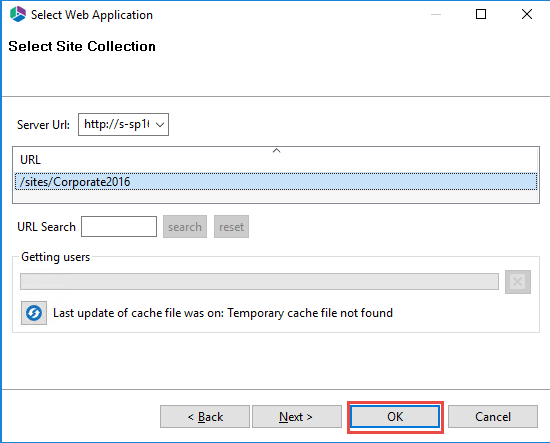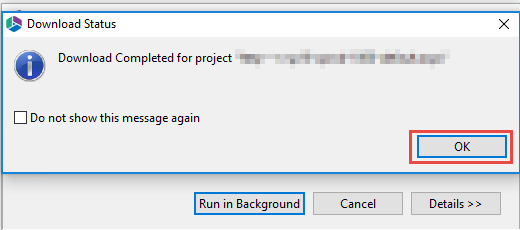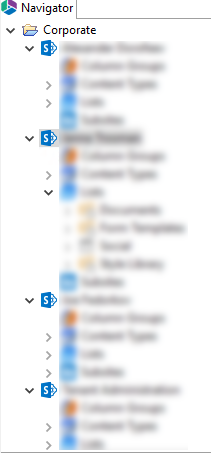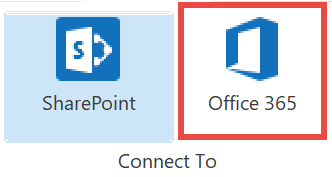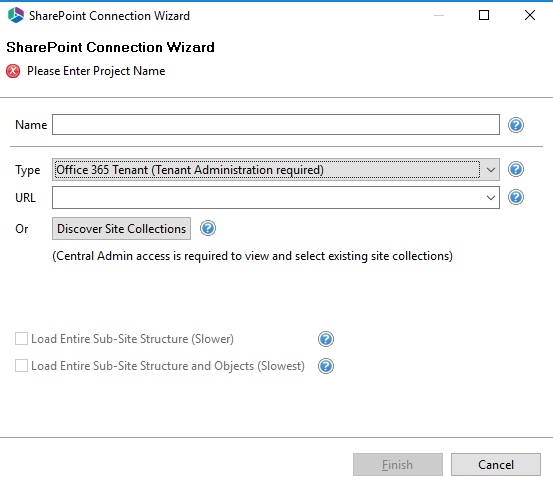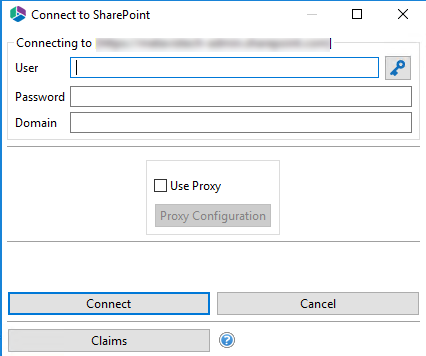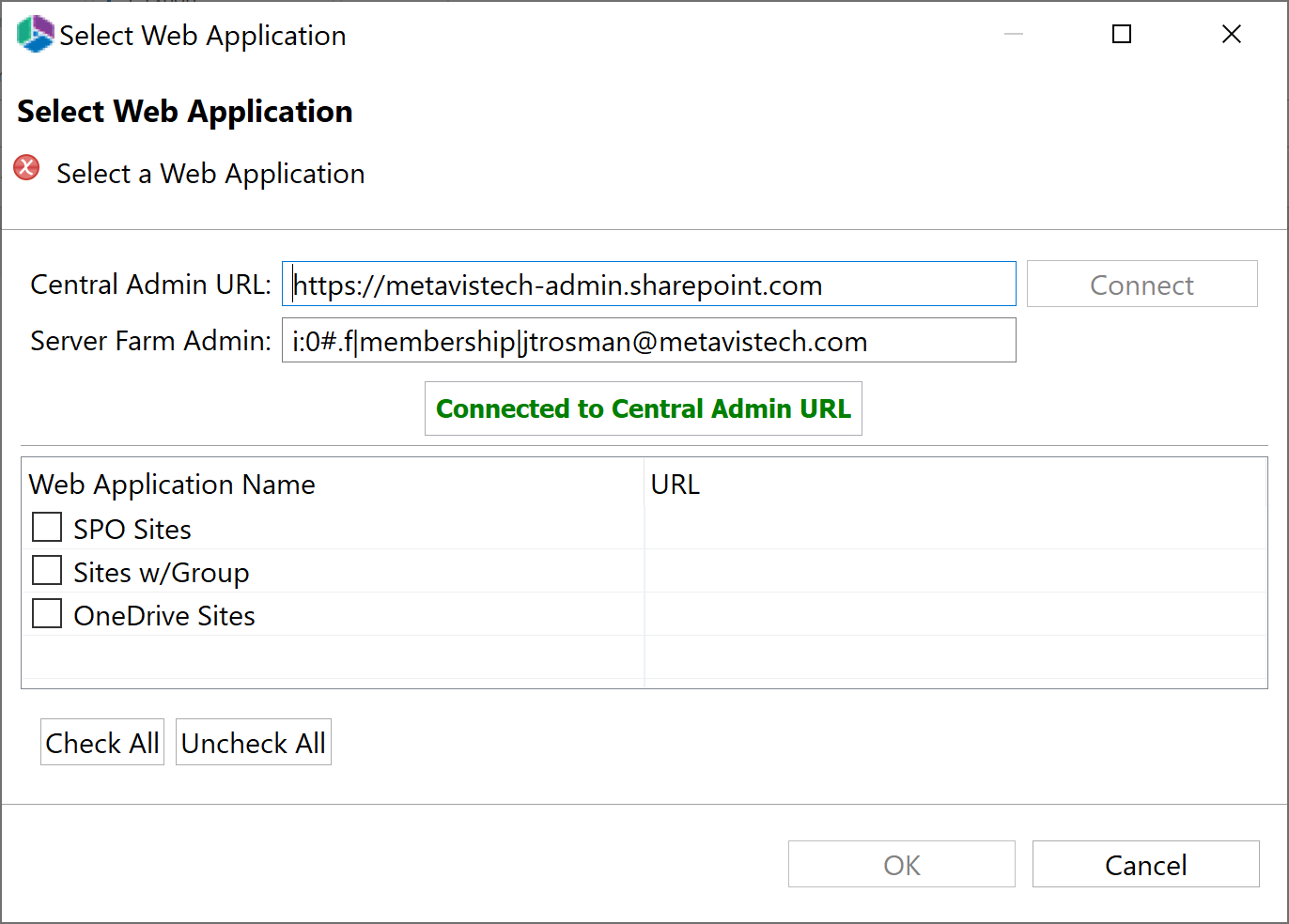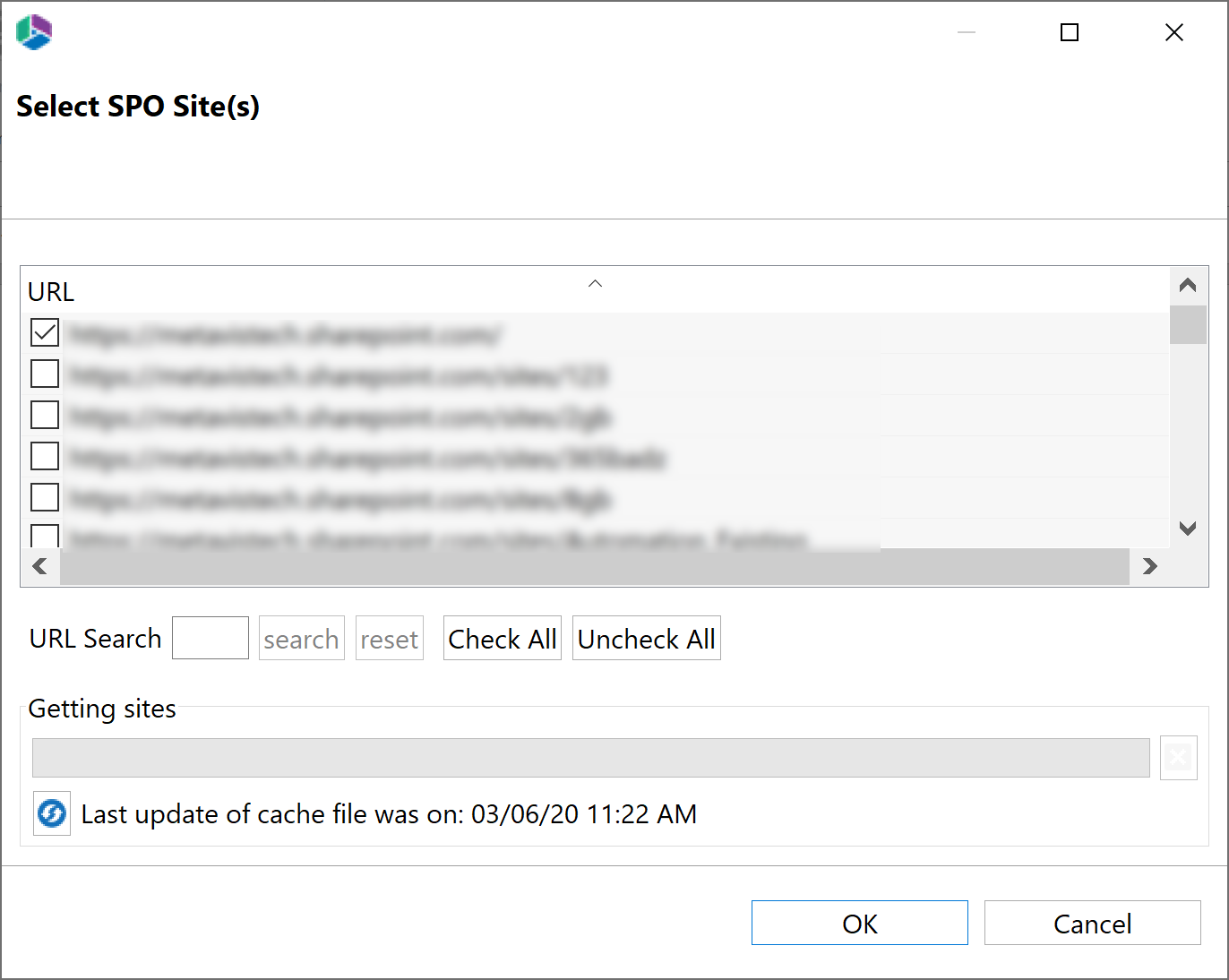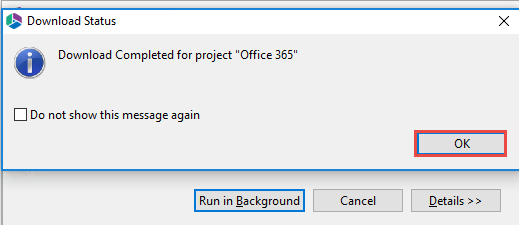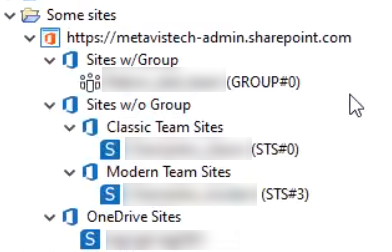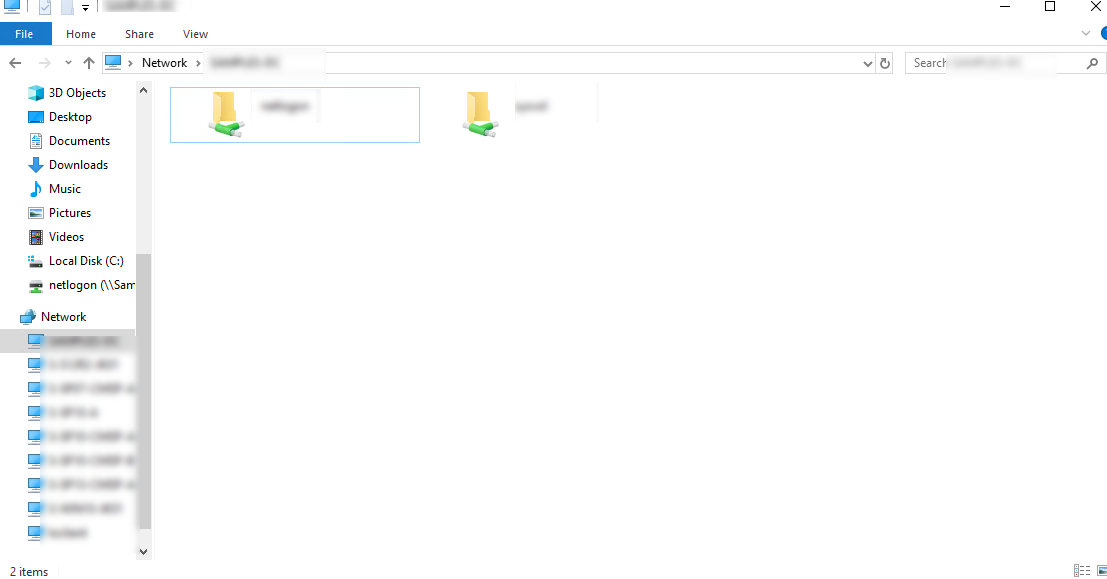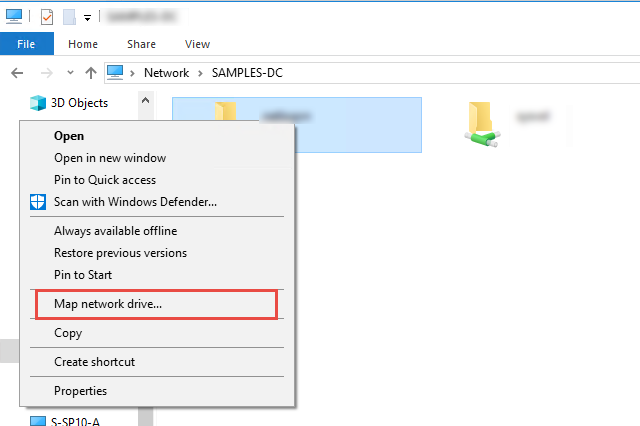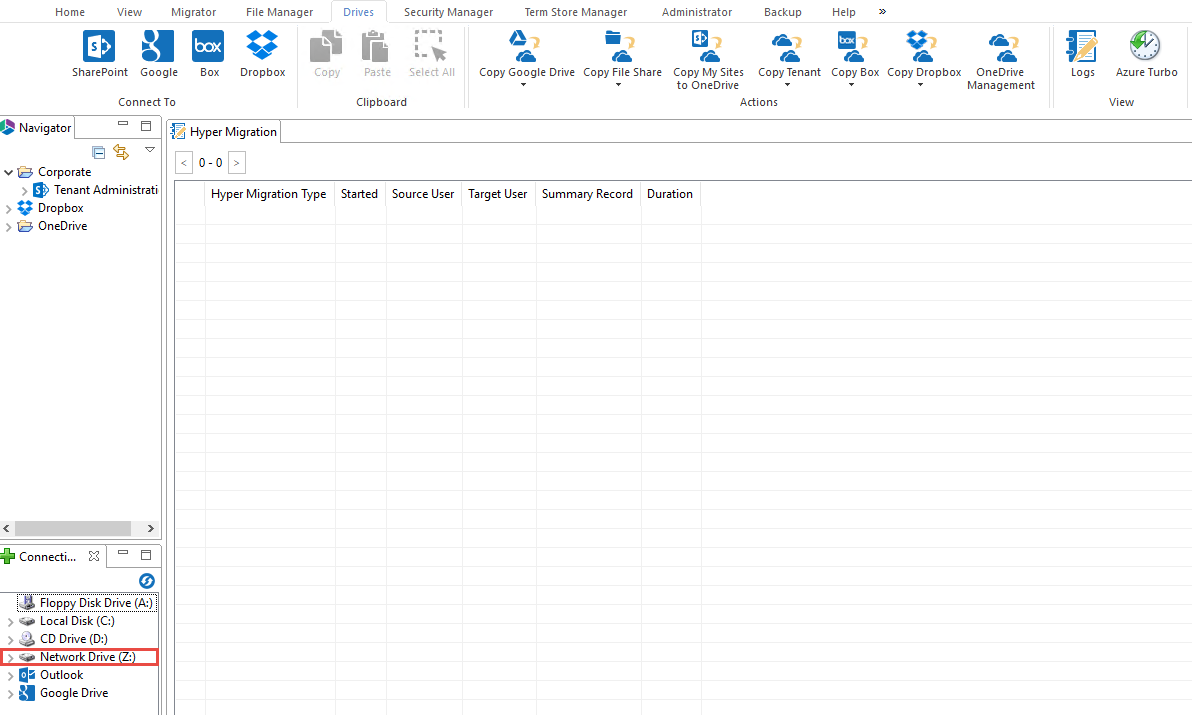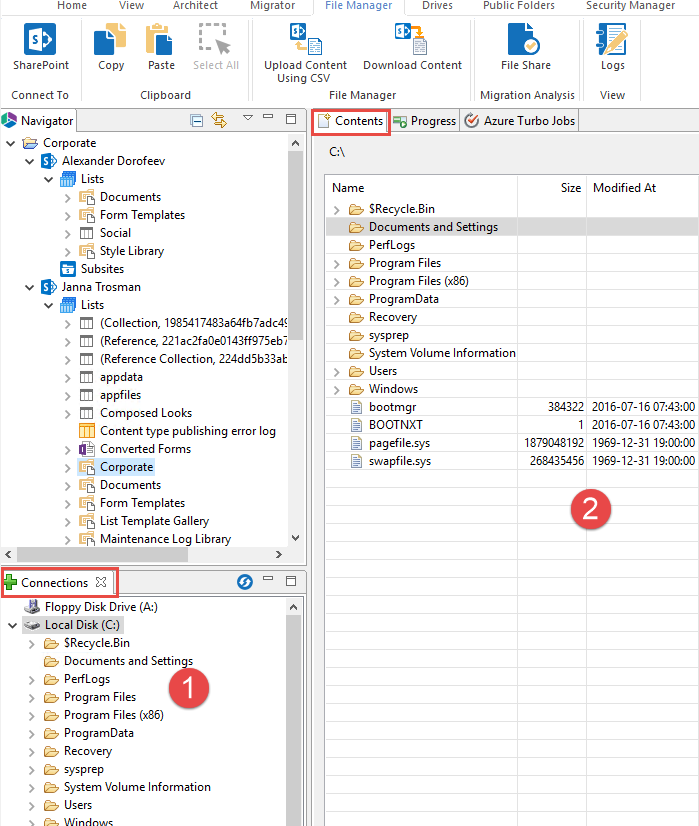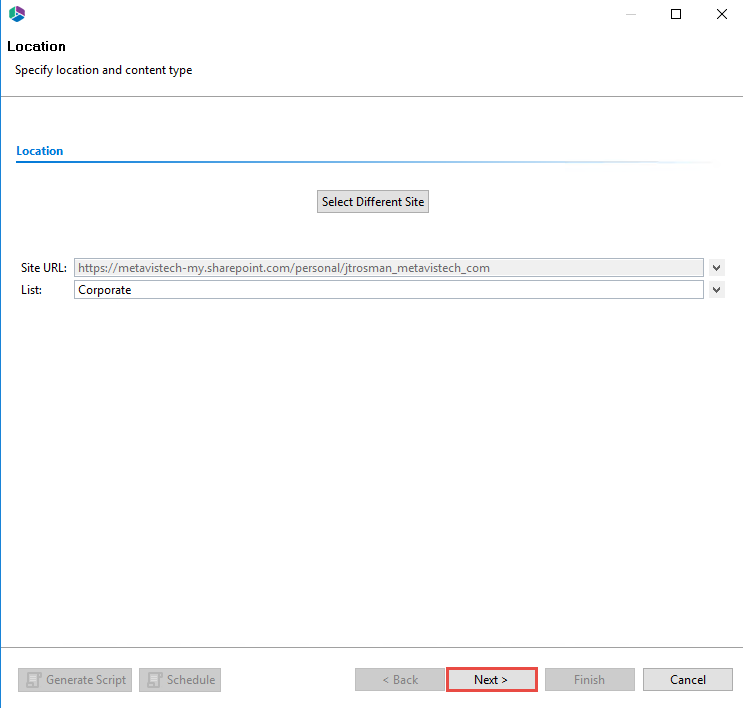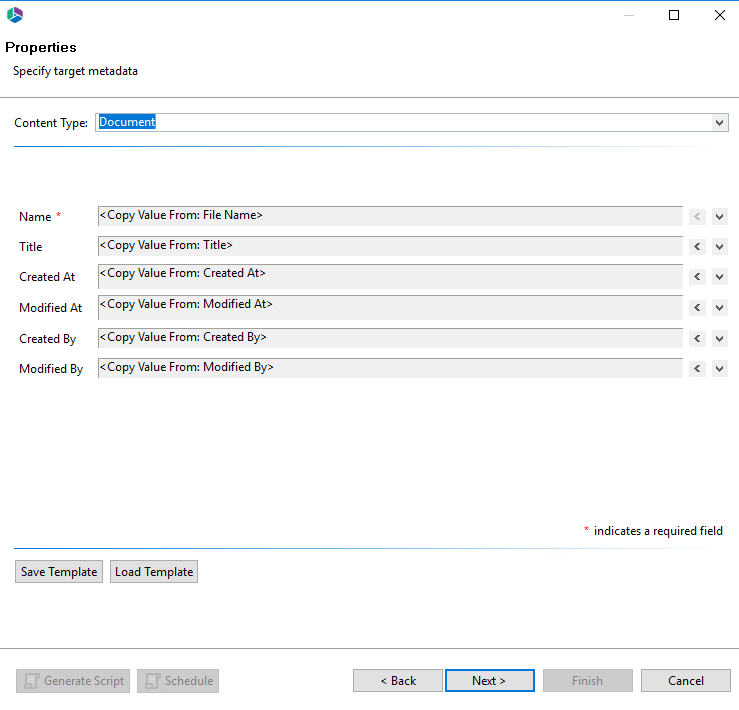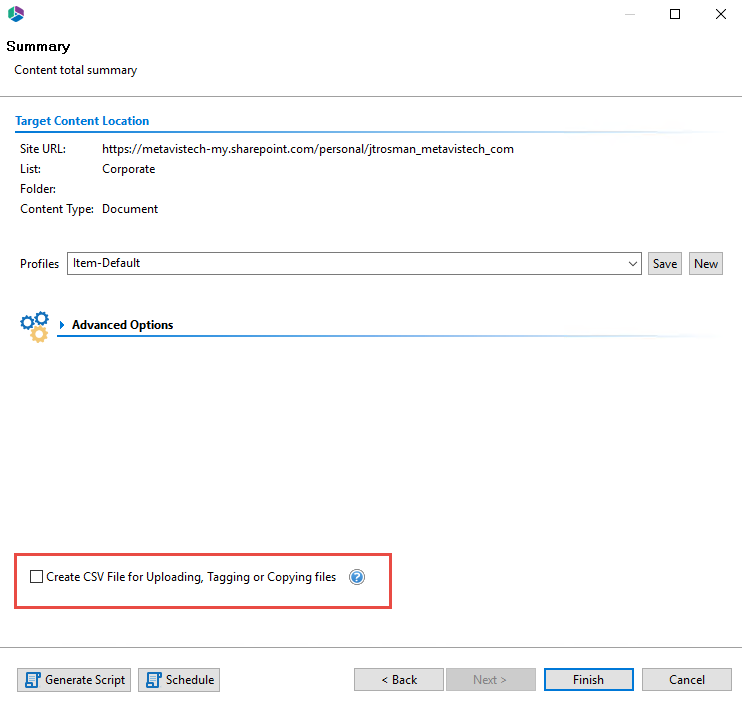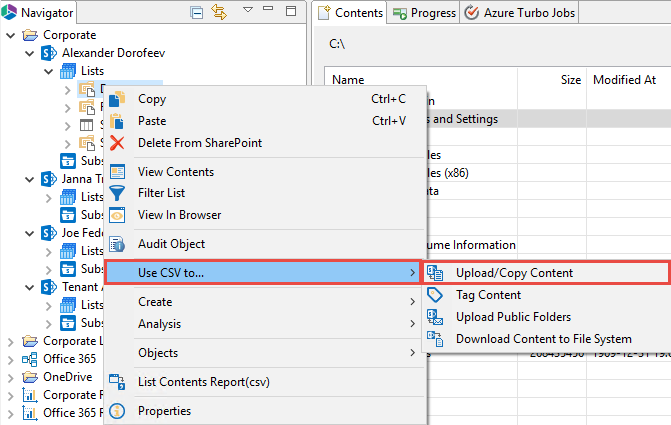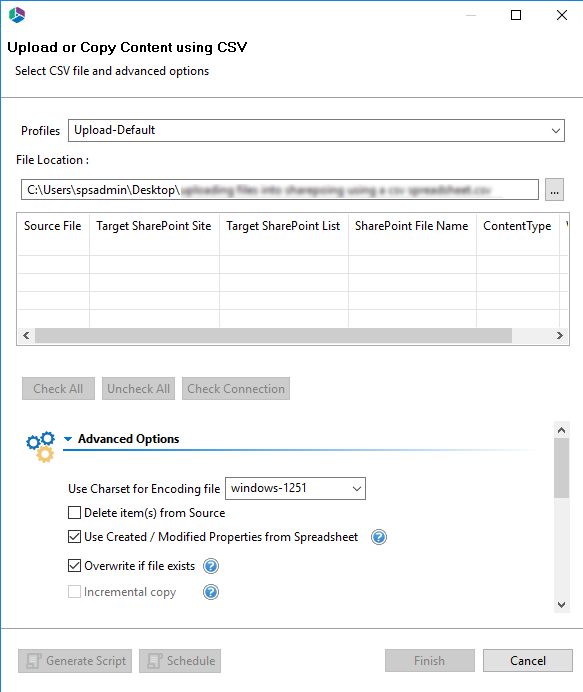Connecting to SharePoint On-Premises Farms
(Not available for Information Manager Power User)
|
|
Metalogix Essentials is optimized for migrations involving Office 365. While it is possible to migrate to/from SharePoint on premises (2013 and later), Quest recommends that you use Metalogix Content Matrix, a tool that specializes in SharePoint on premises migrations, including migrations from SharePoint on premises to SharePoint Online. |
If you wish to connect directly to your SharePoint on-premises farm to perform a pre-migration analysis, follow these steps:
1.Start by selecting the SharePoint option under the Connect To tab in the Ribbon.
2.A window similar to the one shown below will be generated. In the Name field, enter a folder name. In the Type field, select On-Premises Farm (Central Administration required) as your Type. You have the following options when completing the URL portion of this screen, continue to step 5 if you know the URL of your Central Admin site. If you choose to use the Discover Site Collections button, then continue to step 3.
3.If you do not know the URL but have access to Central Administrator for your SharePoint Farm, you can view and select from a listing of all available site collections by pressing the Discover Site Collections button. In the presented window enter the URL for Central Administrator portal (and if necessary the credentials, using Claims if your account requires it) and click Connect. Once you are successfully Connected to Central Admin URL, select the appropriate Site Collection and Click Next to continue.
4.Select the Site Collection which you wish to connect to, and click Ok.
4.Click Finish to connect to the specified SharePoint Site or Site Collection.
5.The operation will start to run, connecting to the SharePoint Site or Site Collections which you specified. You will be notified once it has completed, click Ok.
6.This connection is now available in the Navigator Pane.
Connecting to SharePoint On-Premises Farms
If you wish to connect to OneDrive, then follow these steps:
1.Start by selecting the Office 365 option in the Connect To section in the ribbon.
2.A window similar to the one shown below will be generated. In the Name field, enter a folder name. In the Type field, Office 365 Tenant (Tenant Administration Required) is automatically selected as the Type of connection you will be making. Enter the URL of your Office 365 tenant.
3.You have the following two additional options on this screen:
oLoad Entire Sub-Site Structure - Will load the entire sub-site hierarchy below the current site. To expedite the loading process, no additional objects will be loaded into the sub-site. You may double-click on any sub-site to load its objects individually.
oLoad Entire Sub-Site Structure and Objects - Will load the entire sub-site hierarchy below the current site along with all their objects.
4.Click Finish. The Essentials software will automatically detect the SharePoint authentication mechanism and your client environment. Depending on your configuration, you may be connected automatically or prompted for your credentials. Here are some of the possible scenarios:
·Option 1: If your SharePoint environment is using Integrated Windows Authentication and you are accessing this environment from a computer that is logged into the same domain, then no user/password information is necessary. Press the Next button and you will automatically log in using the credentials of the currently logged in user.
·Option 2: If your SharePoint environment is using Integrated Windows Authentication and you are accessing this environment from a computer that is NOT logged into the same domain then enter your user name, password and Domain in the provided fields and click Next.
·Option 3: If your SharePoint environment is using Form Based Authentication then enter your user name, password and Domain in the provided fields and click Next.
·Option 4: If your SharePoint environment is using Kerberos Authentication please refer to our FAQ area. Detailed configuration instructions are available there.
·Option 5: If your SharePoint environment is Hosted, such as (Office 365, BPOS, FPWeb, etc.) you should be able to connect by entering your user account and password, no differently than any other SharePoint environment.
·Option 6: Password Manager can store account credentials in protected storage to connect to SharePoint. For more information on setting up Password Manager, please refer to our FAQ area.
|
|
NOTE: ·The domain name may also be entered as a part of the user field in either the domain user or the user@domain syntax. ·If you have Digest Authentication enabled, please disable it. It can interfere with the tools ability to connect to SharePoint using Windows Authentication. |
A window requesting a user, password, and domain will pop up. Provide the requested information and click Connect. If your account requires Claims Based Authentication, click the Claims button.
4.The Select Web Application window will appear, select the web applications you wish to connect to. Click Ok.
5.The Select SPO sites, Select Sites with Groups, and/or Select OneDrive sites windows will appear, depending on the web application names you chose (if you selected more than one, they will appear in succession), select the accounts you would like to connect to for each. Click Ok.
6.The operation will start to run, connecting to the accounts you specified. You will be notified once it has completed, click Ok.
7.This connection is now available in the Navigator Pane. Here you can see the differentiation between Classic Team sites and Modern team sites, as well as an indication of what the site's template is (ex Group#0, Blog#0, etc. )
Connect to FileShare
In order to view a file share in the Connections panel within Essentials, you must map your PC to the file share:
1.Navigate to the file share in windows explorer and select the network location.
2.Right Click and select Map Network Drive.
3.Open Essentials, and note that the file share is now available in the Connections section.
|
|
NOTE: If you want to run Essentials as an admin, you will first need to add the Admin to the user group for the file share, otherwise you wont be able to see the file share in the Connections panel. |
Uploading Files into SharePoint Using a CSV Spreadsheet
The uploading files into SharePoint using a CSV spreadsheet option is designed to enhance and expand SharePoints ability to import files located in Windows or other operating systems, by utilizing a spreadsheet that contains accompanying metadata. The files will be imported into SharePoint and tagged with the metadata associated to it from this spreadsheet. Here are the basic guidelines for using the Upload Content Using CSV feature inside Essentials products.
1.Start by identifying the files and folders that you want to import into SharePoint. There are two ways to do this:
·You can expand and navigate through the Connections (1) area in the product. If you double click on a folder or drive, the contents will be displayed in the Contents (2) area. You may drag-and-drop or copy/paste from Connections or Contents areas directly to the destination.
·Alternatively, Essentials provides the same capabilities directly from Windows Explorer.
2.After you have selected the content and dragged/copied it to your SharePoint destination, a familiar wizard will be displayed. This is the same wizard that is used to copy SharePoint content from one place to another. The first window will confirm the destination you drag and dropped the content to. Click Next.
3.The second window will give you the ability to apply metadata values. It is a good idea to take advantage of this feature and apply as many metadata values as possible since all the data is validated against SharePoint. There are many capabilities for intelligent and auto tagging available including mapping to NTFS values such as folder names, file names, owners, etc.; or to select values directly from SharePoint managed metadata, choice and lookup lists. Once you have set all your metadata preferences, click Next.
4.The final screen of the wizard has a check box towards the bottom of the page. Selecting the Create CSV File for uploading files option will generate a comma separated values file compatible with Excel or any text editing software.
5.Although the file content may vary based on the selected metadata, the structure of the CSV spreadsheet will remain consistent. The CSV file will consist of the following columns:
|
Column Name |
Description |
|---|---|
|
Source File |
Identifies the physical path to the file that will be uploaded |
|
Target SharePoint Site |
Identifies the target site for the file listed in the source file column. The field is left blank by default but may be specified to upload content into different sites and lists using the same CSV file. In order to take advantage of this feature the CSV file must be uploaded on a site not a list level. |
|
Target SharePoint List |
Identifies the target list for the import |
|
SharePoint File Name |
Identifies the SharePoint item name that will be used for the import ( "/" is used to identify folders) |
|
Content Type |
Identifies the SharePoint content type that will be used for the import. This content type should already exist within the target SharePoint list and must be spelled exactly the same way to avoid errors |
|
Custom Fields |
Any custom fields would be listed following the content type. These fields must already exist within the target SharePoint list (and content Type). The values entered here must also pass any SharePoint validation or restrictions for the corresponding field. |
|
Created At |
Identifies the content creation date which is extracted from the file system. If left blank the value will be set to the current date and time. |
|
CSV ID Col |
This is a reserved field utilized for incremental copy functionality. Do not enter anything into this field. |
|
Modified At |
Identifies the last content modification date which is extracted from the file system. If left blank the value will be set to the current date and time |
|
Created By |
Identifies the user who created the content. If left blank the value will be set to the user currently logged into SharePoint |
|
Modified By |
Identifies the user who last modified the content. If left blank the value will be set to the user currently logged into SharePoint. |
|
Mark Version |
For versioned libraries, identifies the version level for the item being imported ("Major" or "Minor"). If a quasi-versioning system was used in the file system, this field along with the SharePoint File Name can be used to recreate the versions in SharePoint. In order to implement this functionality, use the same file name in the SharePoint File Name field and then specify the appropriate version level in this field. If left blank, the default version level will be used during import. |
|
Version Comment |
Specifies the comment that will be used when importing items |
|
|
NOTE: The layout must not be changed, otherwise the imported file will not be recognized. However, the content may be edited to your preferences. Please remember that any values that are modified or edited must be valid to SharePoint, otherwise they will be ignored or an error will be generated. |
6. Identify the library or folder destination for your files, and upload content using CSV by doing one of the following:
·Select Upload Content Using CSV from the ribbon in the File Manager section.
·right-click and select "Use CSV to..." and then select "Upload/Copy Content".
7.Next the Upload or Copy Content using CSV screen will be generated. Enter the location of your .csv file or .bck file.
|
|
NOTE: The .bck files are automatically created by the application when downloading the entire site and sub-sites (see Downloading Content from SharePoint for more information). |
8.You may check individual items or the Check All button at the bottom to select everything. In addition if you are using a custom character set select it in the provided field.
9.To start the import, just press the Finish button.



